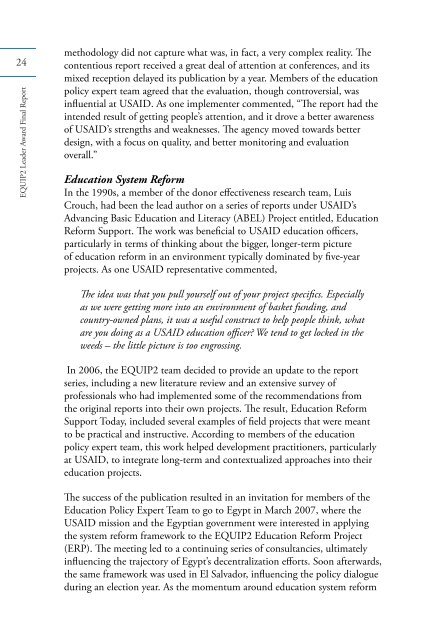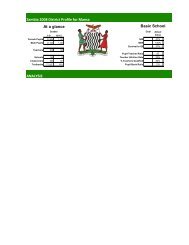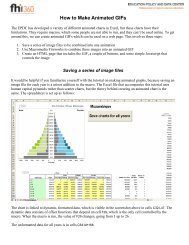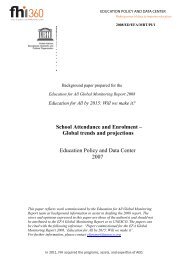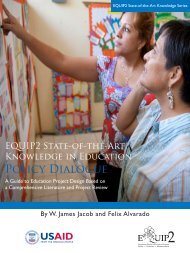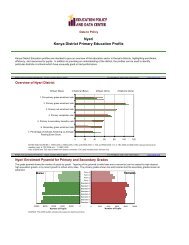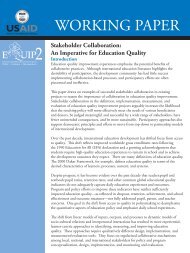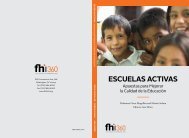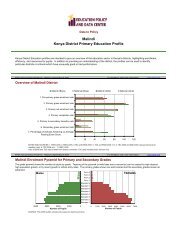EQUIP2 Final Report.pdf - Education Policy Data Center
EQUIP2 Final Report.pdf - Education Policy Data Center
EQUIP2 Final Report.pdf - Education Policy Data Center
You also want an ePaper? Increase the reach of your titles
YUMPU automatically turns print PDFs into web optimized ePapers that Google loves.
24<br />
<strong>EQUIP2</strong> Leader Award <strong>Final</strong> <strong>Report</strong><br />
methodology did not capture what was, in fact, a very complex reality. The<br />
contentious report received a great deal of attention at conferences, and its<br />
mixed reception delayed its publication by a year. Members of the education<br />
policy expert team agreed that the evaluation, though controversial, was<br />
influential at USAID. As one implementer commented, “The report had the<br />
intended result of getting people’s attention, and it drove a better awareness<br />
of USAID’s strengths and weaknesses. The agency moved towards better<br />
design, with a focus on quality, and better monitoring and evaluation<br />
overall.”<br />
<strong>Education</strong> System Reform<br />
In the 1990s, a member of the donor effectiveness research team, Luis<br />
Crouch, had been the lead author on a series of reports under USAID’s<br />
Advancing Basic <strong>Education</strong> and Literacy (ABEL) Project entitled, <strong>Education</strong><br />
Reform Support. The work was beneficial to USAID education officers,<br />
particularly in terms of thinking about the bigger, longer-term picture<br />
of education reform in an environment typically dominated by five-year<br />
projects. As one USAID representative commented,<br />
The idea was that you pull yourself out of your project specifics. Especially<br />
as we were getting more into an environment of basket funding, and<br />
country-owned plans, it was a useful construct to help people think, what<br />
are you doing as a USAID education officer? We tend to get locked in the<br />
weeds – the little picture is too engrossing.<br />
In 2006, the <strong>EQUIP2</strong> team decided to provide an update to the report<br />
series, including a new literature review and an extensive survey of<br />
professionals who had implemented some of the recommendations from<br />
the original reports into their own projects. The result, <strong>Education</strong> Reform<br />
Support Today, included several examples of field projects that were meant<br />
to be practical and instructive. According to members of the education<br />
policy expert team, this work helped development practitioners, particularly<br />
at USAID, to integrate long-term and contextualized approaches into their<br />
education projects.<br />
The success of the publication resulted in an invitation for members of the<br />
<strong>Education</strong> <strong>Policy</strong> Expert Team to go to Egypt in March 2007, where the<br />
USAID mission and the Egyptian government were interested in applying<br />
the system reform framework to the <strong>EQUIP2</strong> <strong>Education</strong> Reform Project<br />
(ERP). The meeting led to a continuing series of consultancies, ultimately<br />
influencing the trajectory of Egypt’s decentralization efforts. Soon afterwards,<br />
the same framework was used in El Salvador, influencing the policy dialogue<br />
during an election year. As the momentum around education system reform


